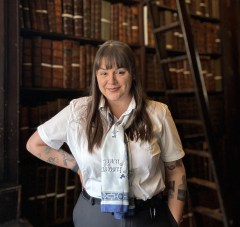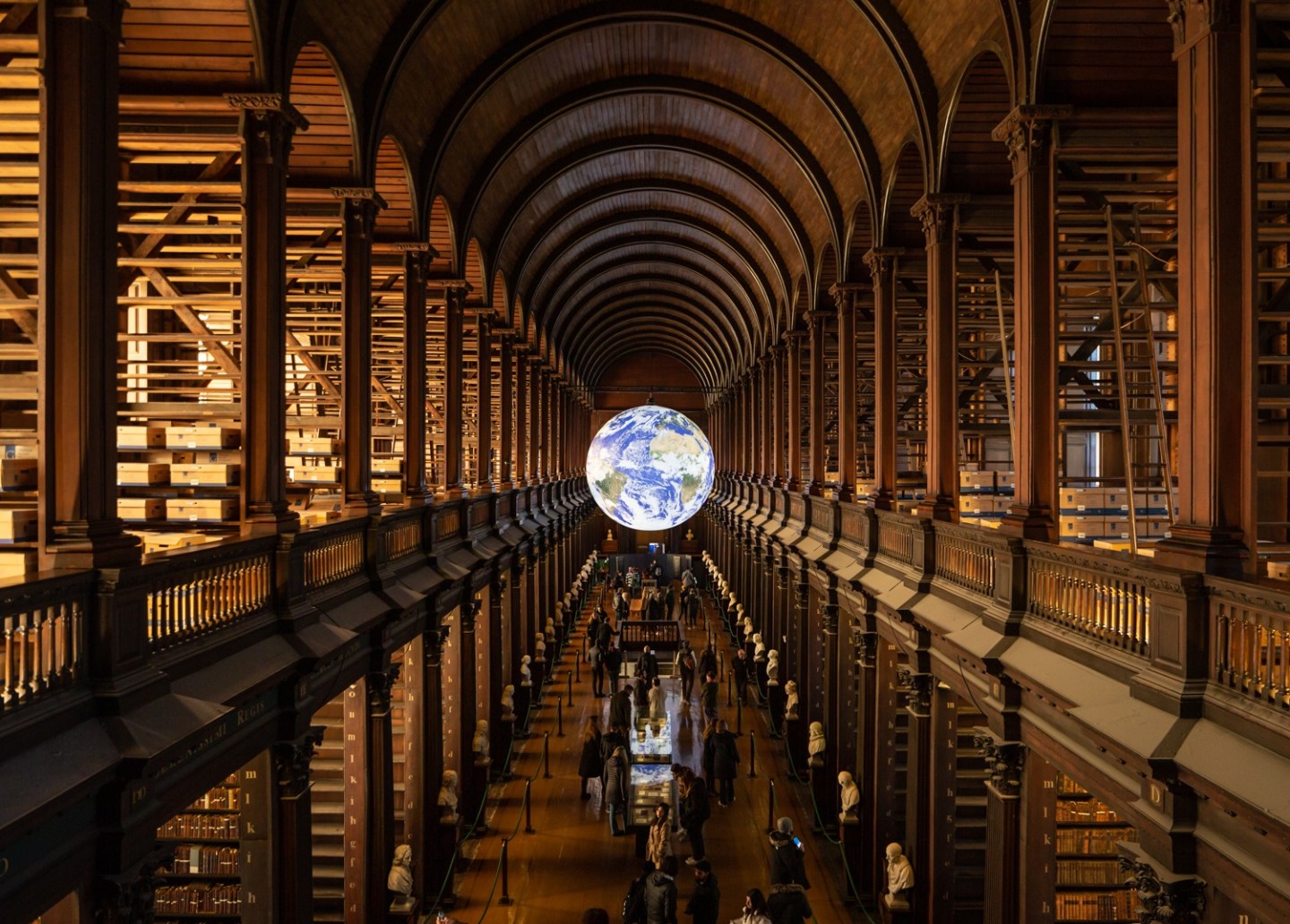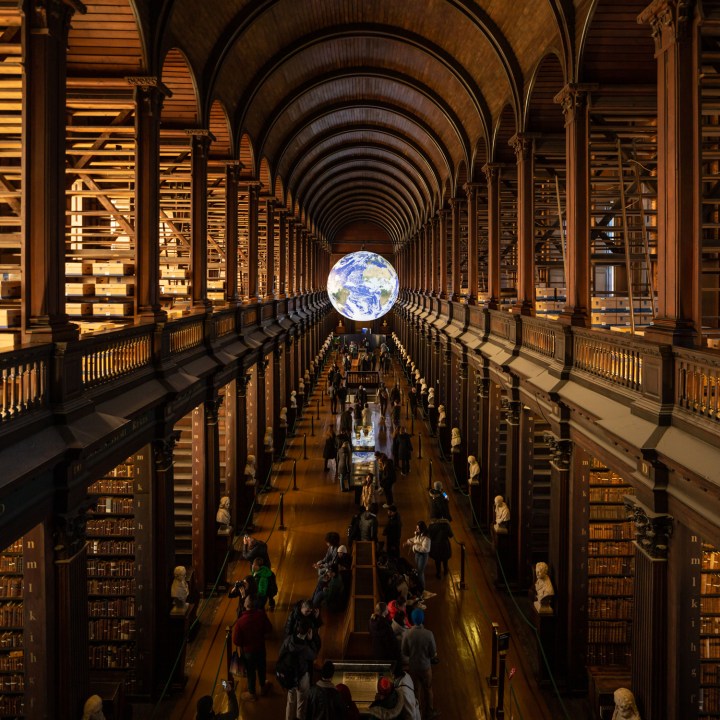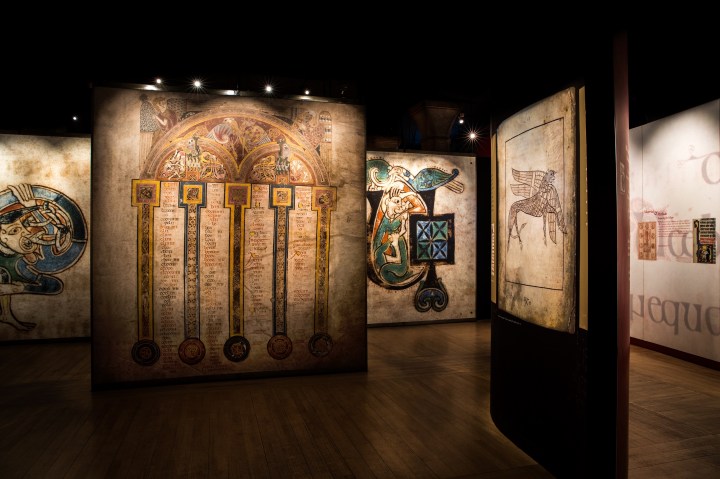
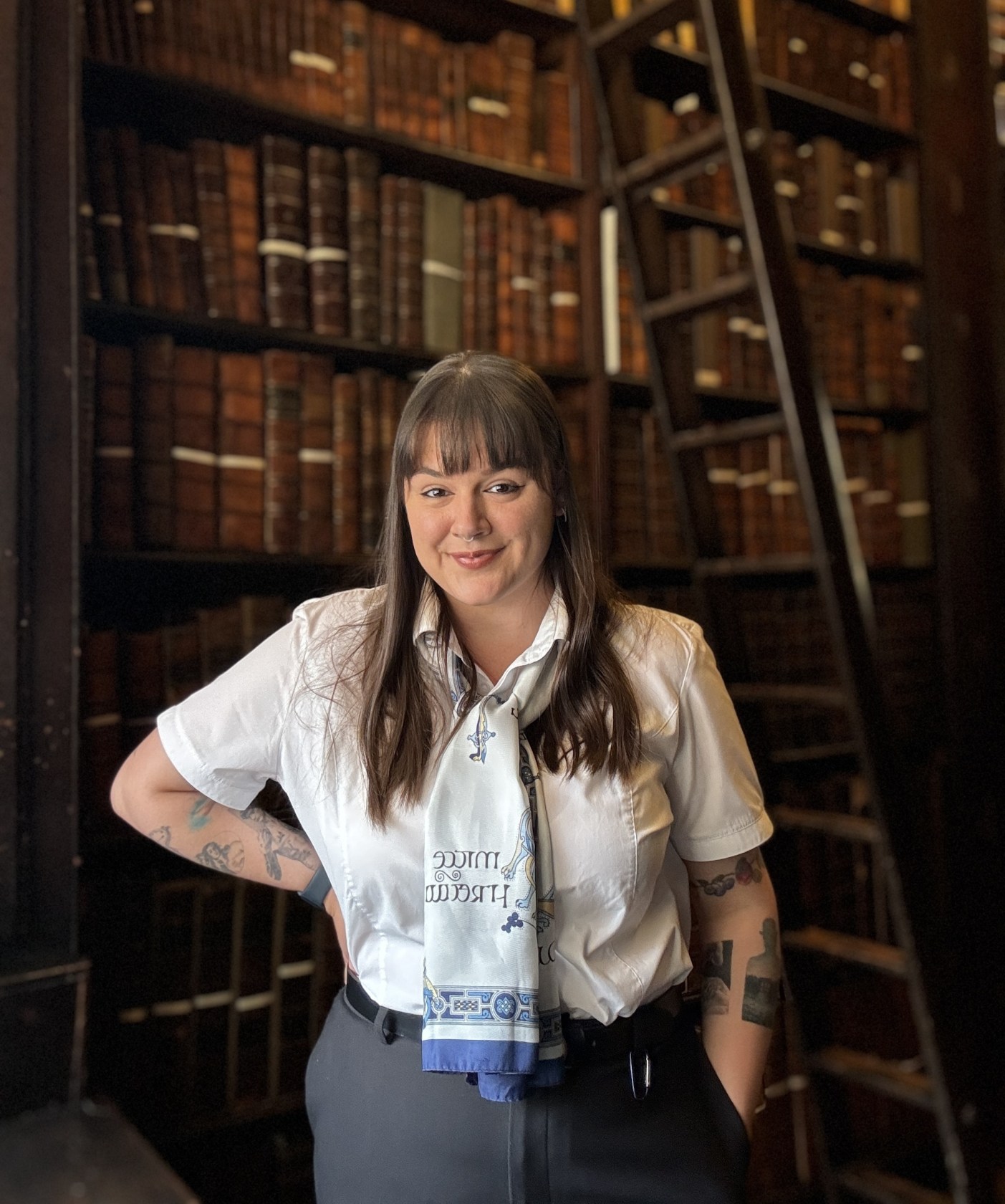
The role of a Library Guard gives me a backstage pass to some of Ireland’s most loved historical treasures.
There’s something about telling people I’m a Library Guard for the Book of Kells and Old Library that instantly sparks people’s curiosity. It’s not exactly your typical job title, and most people don’t even realise it’s a career option.
You have most likely heard of the Book of Kells. It’s one of Ireland’s top visitor attractions, and you would be hard-pressed trying to find an Irish person who hasn’t heard of it. What surprises me, however, is how little most people know about this iconic manuscript and the Old Library that houses it.
In this blog I will reveal 5 facts about the Book of Kells and Old Library that you likely haven’t heard before.

One of the most common questions I get is, “Is it worth going to see?” and to that, I often respond with a question of my own: “Is the Mona Lisa worth going to see?”
We all have a picture in our mind of how the Mona Lisa looks, so when we are in Paris, we are compelled to head in our droves to the halls of the Louvre to see Da Vinci’s famed masterpiece in the flesh. It’s almost like a rite of passage to make the journey.
In many ways, the Book of Kells is our own Mona Lisa – an iconic masterpiece that’s one of a kind. What makes the Book of Kells so remarkable, in my opinion, is that it has 680 pages of intricate, detailed art that have survived over over a millennium. I truly believe that a visit to Dublin would be incomplete without visiting our beloved Book of Kells.
Let’s start with the basics and some background information:
The Book of Kells is a lavishly decorated manuscript containing the four Gospels of the New Testament: Matthew, Mark, Luke and John. It’s believed that the Book of Kells was originally created in Iona, an island off the coast of Scotland, and travelled to Kells in Ireland after several Viking raids in the early 9th century. At roughly 1,200 years old, it is considered to be a masterpiece of medieval art.
Here is the first fact that might surprise you:
1. The pages of the Book of Kells are not turned every day.
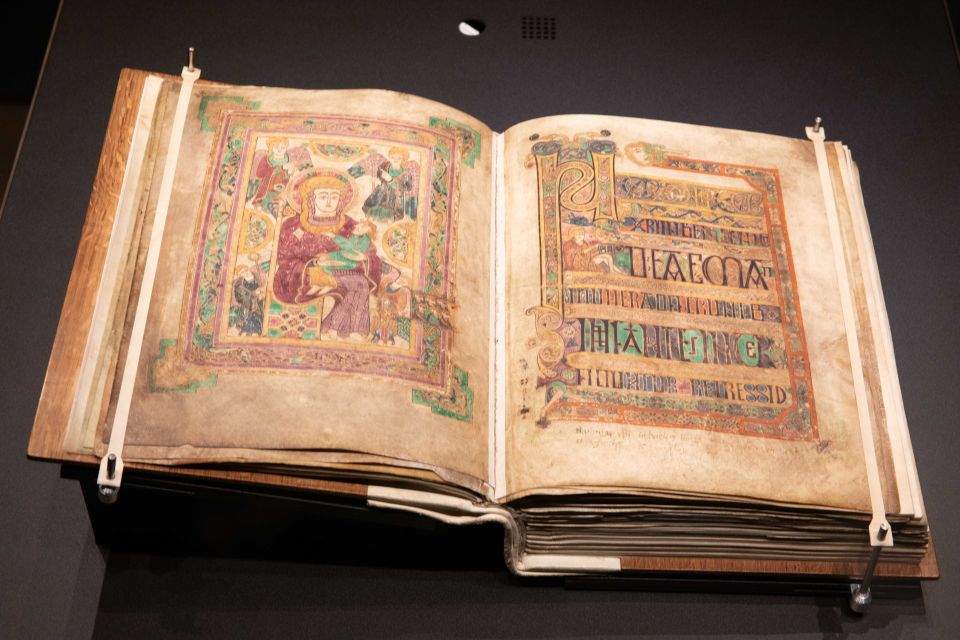
I was often told by my Grandmother and my teachers in school that the pages in the Book of Kells were changed daily. In fact, this is a widely believed urban myth and I can’t count how many times I’ve heard the question from visitors “Are the pages still changed every day?”.
The truth is that the pages in the Book of Kells are changed a few times a year. One of the main reasons for this lies in another little known fact: the Book of Kells was divided into four volumes (of four Gospels) in 1953 for preservation purposes. This allows three of the Gospels to rest while one is on display, and when the pages are changed, so is the Gospel. For example, if the Gospel of Matthew is currently on display, the next one on display will be the Gospel of Mark.
The 1,200 year old manuscript is also too delicate to be handled frequently. Instead, two pages are displayed at any one time, allowing visitors to appreciate the beauty of the Book of Kells, while ensuring its preservation. Learn about the current pages on display here.
Now, let’s talk about another iconic Irish treasure that everyone recognises, but few know in detail about: the Brian Boru Harp. If you’re like most people, the first thing you think about when you see the harp is the symbol on Irish passports, or a nice pint of Guinness. The harp is certainly the symbol for both, however the depth of its importance in Irish history is not widely known.
2. The Brian Boru Harp, housed in the Long Room, is one of only three surviving medieval Gaelic harps. The reason behind the rarity of these harps is something you may not know.
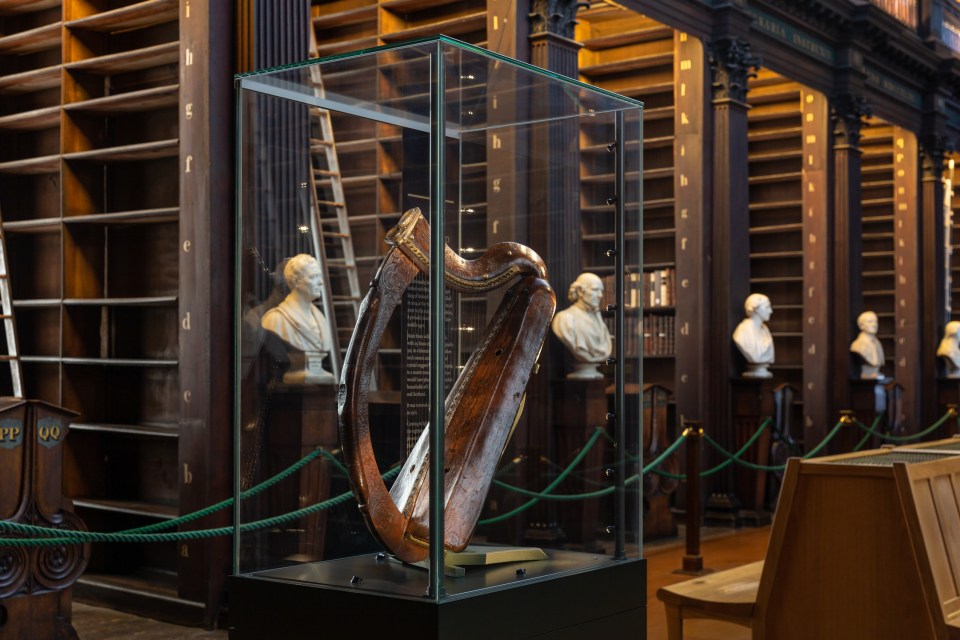
The Irish harp isn’t just an instrument, it’s also a symbol of resistance. In ancient Gaelic society, chieftains rarely ventured far without their entourage, which typically included a bard and a harper. Harpers, who often dedicated decades to mastering their craft, held a central place in Gaelic social life. However, bcause of their power and influence in society, many harpers were imprisoned or executed in the 1500s. During the reign of Queen Elizabeth I, there was an order to:
“Hang harpers, wherever found, and destroy their instruments”
As a result, only three medieval Gaelic harps remain – the Brian Boru is the oldest of the three and the jewel among them. The other two surviving medieval Gaelic harps are the Queen Mary Harp and the Lamont Harp, both housed in museums in Scotland.
So, the next time you see the harp on your pint of Guinness, remember that it’s a symbol of Ireland’s enduring spirit.
3. There are hidden bookcases upstairs under the windows!
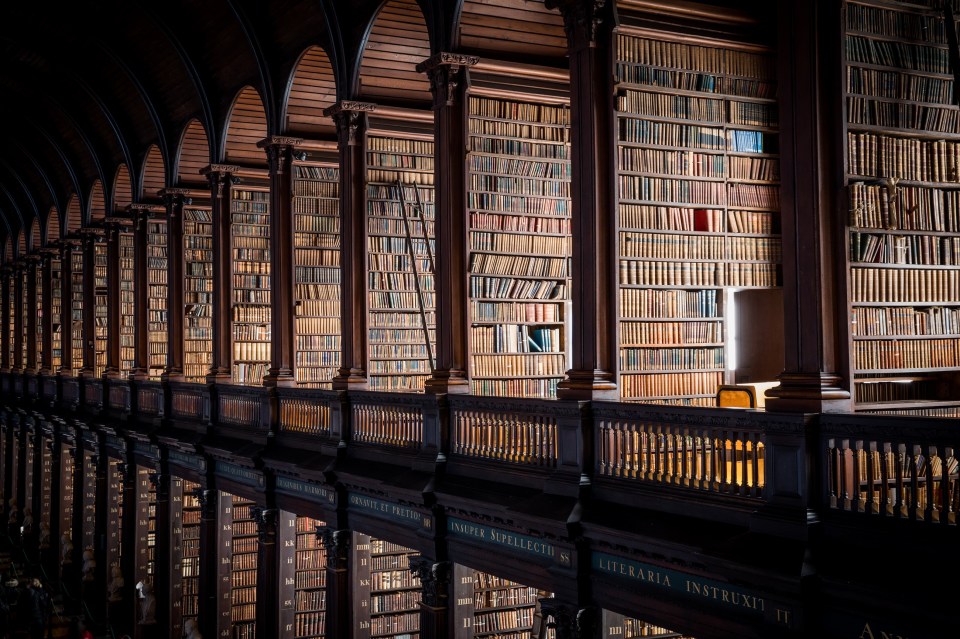
One of the questions I am asked the most is: “How do you walk around upstairs?”
From where visitors stand, it is actually quite challenging to see. However, if you take a look at the image above you will see that there is a passageway that runs through the bookshelves.
These bookshelves on the upper gallery were built when a new floor was added to the Long Room in 1861. During the 1840’s, as the Library’s collection continued to rapidly expand, there was a requirement to look at every corner of the Library chamber for storage opportunities. One solution involved installing fixed shelves against the walls under the windows and adding a second, double-sided bookcase in-front. These new bookcases featured wheels and hinges, allowing them to be swung out to create a total of three sets of shelves. The deeper windows allowed the placement of two parallel hinged cases, providing five sides of shelving. This arrangement made it possible for the Long Room to accommodate approximately 23,000 further volumes and most of these hinged bookcases remain intact today.
The Long Room is truly a space like no other. It has operated as a working library since it opened in 1732 and is renowned as one of the most beautiful libraries in the world. It usually houses 200,000 early printed books. However, the Old Library is currently undergoing a landmark redevelopment project, which will use modern design and technology to protect the building and conserve its precious collections. As a result, the majority of the books have been temporarily transferred to a climate controlled storage facility.
However, approximately 16,000 books remain in place in the first four bays in the room to give visitors a sense of how the shelves usually appear. Which leads me to another frequently asked question: “How are the books organised?”
4. The books are organised by size – from largest on the bottom, to the smallest on top!
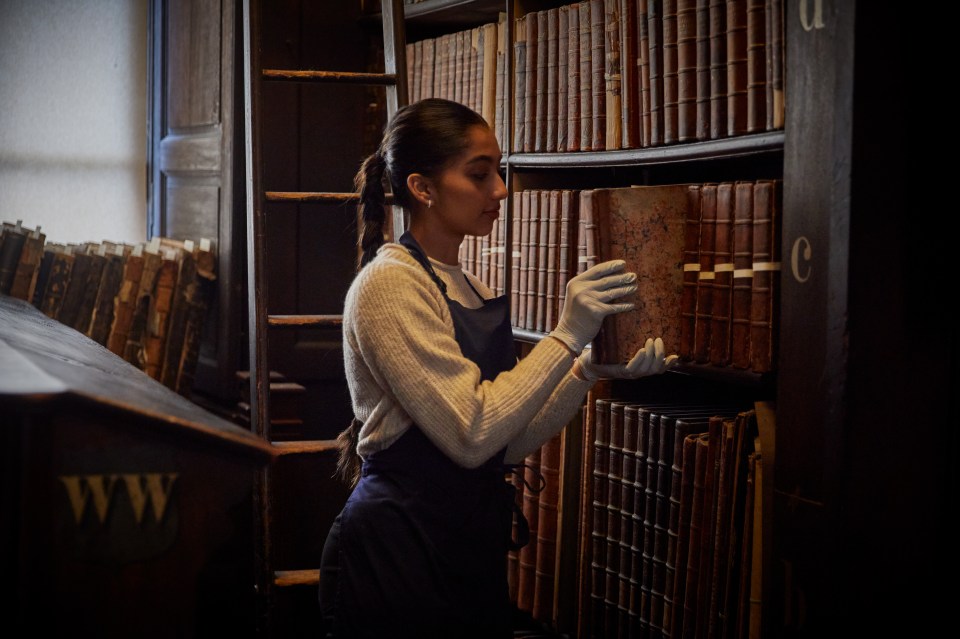
Most people are shocked to learn that we don’t use the Dewey Decimal System. However, the system employed in the Old Library allows us to maximise the storage space for books. The Library uses a traditional fixed-location numbering system (for example, BB.d.3) where every book is stamped with their location number and it will always return to the same location. This includes storing the smallest books on top and the largest towards the bottom, which helps when the Librarians climb ladders to reach books at a height!
I have arranged a selection of videos featuring members of the Library team at the end of this blog, to give you insider insight on how the Long Room operates as a working library.
Next, I will reveal surprising fact number 5 which is my favourite one of all.
5. The company who made the case for the Book of Kells, also made the case for the Mona Lisa, the Crown Jewels and the Dead Sea Scrolls.
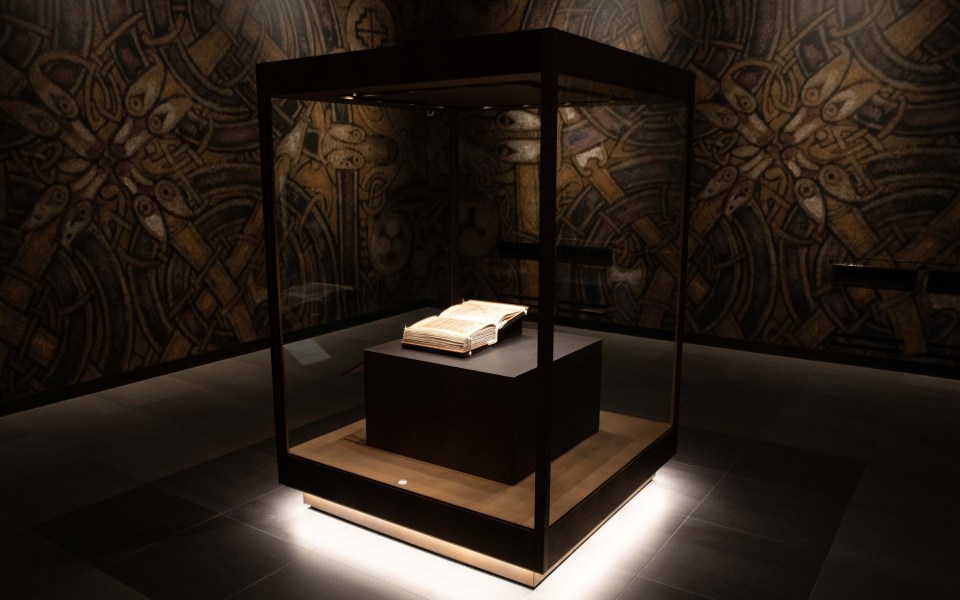
The Book of Kells display case was made by Goppion and was installed in the Treasury at the Old Library in 2020, replacing the previous case. Goppion are leaders in display case technology and have crafted cases designed to protect some of the most precious artefacts in the world. Their display cases feature at the Louvre, the Vatican and the British Museum to name a few. The newly installed display case for the Book of Kells is designed to enable the viewing of every page of the manuscript, while ensuring optimal preservation. The previous Book of Kells display case was too shallow to showcase certain pages, but with the new Goppian case, the public can now view pages that haven’t been displayed in decades. Learn about the current pages on display here.
The science behind the Goppion case is meticulously built to protect the Book of Kells. It is equipped with a sophisticated air filtering system, is humidity controlled and has fire and heat protection systems in place. It also has a data logger monitor inside, monitoring the temperature, humidity, the accumulated light, and UV light.
Listen to Susie Bioletti, previous Head of Conservation and Preservation at Trinity speak about the case here:
My role as a Library Guard at the Old Library has given me a unique perspective and a deeper appreciation for the hidden treasures we often overlook right before our eyes. Each day I find it hard to believe that I actually get to work in a place that is so incredibly beautiful! While people come from all over the globe to see the Book of Kells and Old Library, I’m lucky enough to call it my office. Definitely not your average day job!
